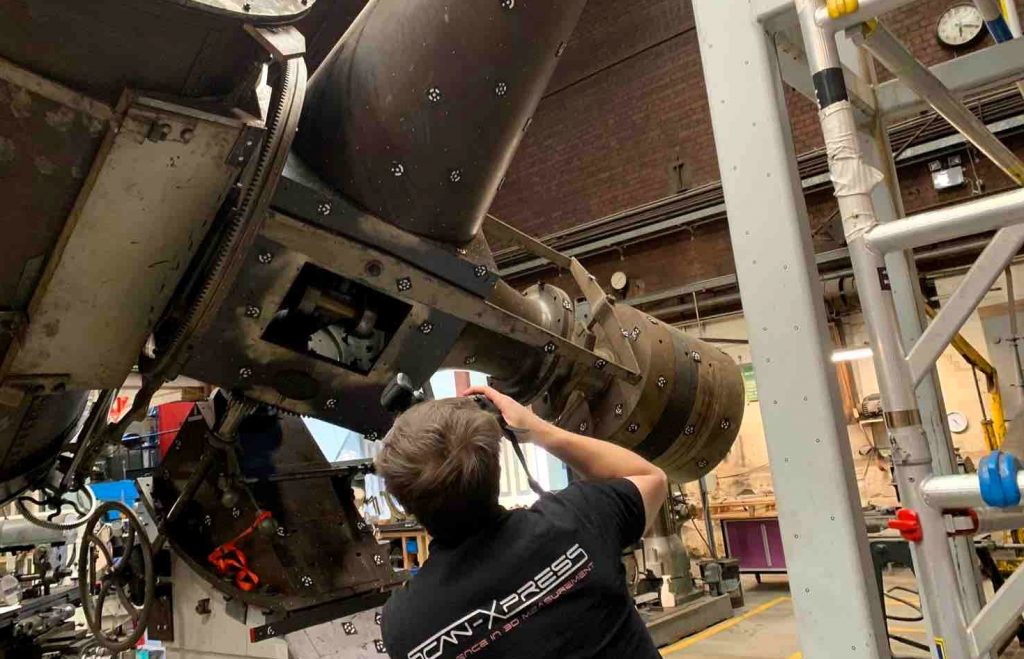Scan-Xpress from our global partner network is literally facing some big 3D metrology challenges. The well-known Great Melbourne Telescope was severely damaged in a fire. Due to this incident, it was unable to generate a clear functioning image. After years of restoration work on this monument, modern 3D scan technology was needed to further enhance the full potential of the telescope again. This is where our partner stepped in. This project was especially important for their customer Scienceworks – an educational destination in Australia which provides interactive exhibitions and experiences to explore the different areas of science. A fundamental part of that mission is the Great Melbourne Telescope.
Insights into the Great Melbourne Telescope
Commissioned in the mid-19th century, the Great Melbourne Telescope was conceived as a pioneering instrument in the exploration of the heavens. This colossal telescope boasts remarkable dimensions, with a primary mirror measuring an impressive 48 inches (1.2 meters) in diameter and a total length of approximately 6 meters supported by a sturdy equatorial mounting. The primary purpose of the Great Melbourne Telescope is to unravel the mysteries of the cosmos. Equipped with cutting-edge technology and precision optics, it enables astronomers to observe celestial phenomena with unprecedented clarity and detail. Today, the Great Melbourne Telescope continues to inspire astronomers and enthusiasts alike, serving as a beacon of discovery in the ever-expanding quest to unlock the secrets of the cosmos.
Facing challenges with the compact 3D scanner ATOS Q
As the Great Melbourne Telescope cannot be moved, the 3D measurement technology has to come to the part. Therefore, the 3D scanner with its compact design was particularly suitable for this application. It enables ease of travel and allows for on-site measurements. The integrated blue light technology of the 3D scanner provided highly accurate and precise 3D data. Part information could be captured quickly and easily even with such enormous dimensions of the component. The 3D scanning was supported by the TRITOP solution by ZEISS. It is used for photogrammetry, which is necessary for scans of these large components in order to create coherent and realistic 3D models of the original.
All-in-one software for easy repair processes
To connect the dots; ZEISS INSPECT software was the right solution. The software application generated a detailed inspection report of the whole object as well as a stage inspection report for the different rotated positions of the telescope. These insights help to identify areas on the part in need of repair, which can be easily fixed with just a few clicks.
